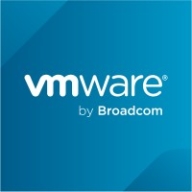

Find out in this report how the two Virtualization Management Tools solutions compare in terms of features, pricing, service and support, easy of deployment, and ROI.
Initially, the CapEx was higher than VMware's, but considering the operational cost over time, it has been beneficial.
You will get 60% ROI with Nutanix Prism on-premises.
Basic means standard business hours support, Production means 24/7, Mission Critical means faster SLA with technical account managers connectivity, and Ultimate means full white-glove support with a dedicated team.
Nutanix's technical support is very good; they are better than other vendors and have supported us well.
The customer gets a single dashboard, single calling point, and single ticketing tool for everything through Nutanix itself.
It's difficult to find necessary documentation, open tickets, and get support.
We are paying too much for technical support from VMware.
Nutanix Prism is completely scalable; you can add nodes and disks without using downtime, allowing for easy scaling.
The entire Nutanix solution is stable.
I have not experienced any downtimes, crashes, or performance issues with Nutanix Prism.
We are managing that one but usually we have an API connector between our firewall vendor and our VMware NSX.
The presales and marketing team should inform clients about resource requirements, such as RAM used by CVM, to help manage expectations.
Regarding Nutanix Prism's single pane overview, the limitation is that you cannot troubleshoot all errors from Prism Central; you sometimes need to log into the CLI to change settings such as the IP address of the CVM in the AHV.
Broadcom should improve by going back to what was working before, offering the suite of tools that clients actually use, and allowing clients to decide the best options for them.
At first, the cost seemed heavy, but over time, its cost-effectiveness became evident.
I hear that Nutanix Prism is more expensive than others, but as a technical person, I don't know the details about the pricing aspect.
Broadcom is known for increasing product prices, making them expensive compared to what people used to pay.
Nutanix Prism is completely scalable; you can add nodes and disks without downtime, allowing for easy scaling.
One of the most useful features is the disaster recovery setup, which includes two clusters, one for our production server and another for our recovery site.
One of the biggest problems with VMware NSX is logging, and vRealize Network Insight helps by providing comprehensive logs.
| Product | Market Share (%) |
|---|---|
| Nutanix Prism | 11.7% |
| VMware Aria Operations | 30.0% |
| IBM Turbonomic | 13.0% |
| Other | 45.3% |
| Product | Market Share (%) |
|---|---|
| vRealize Network Insight | 0.6% |
| Zabbix | 11.1% |
| Datadog | 4.8% |
| Other | 83.5% |


| Company Size | Count |
|---|---|
| Small Business | 25 |
| Midsize Enterprise | 14 |
| Large Enterprise | 28 |
| Company Size | Count |
|---|---|
| Small Business | 11 |
| Midsize Enterprise | 9 |
| Large Enterprise | 41 |
Nutanix makes infrastructure invisible, elevating IT to focus on the applications and services that power their business. The Nutanix enterprise cloud platform leverages web-scale engineering and consumer-grade design to natively converge compute, virtualization and storage into a resilient, software-defined solution with rich machine intelligence. The result is predictable performance, cloud-like infrastructure consumption, robust security, and seamless application mobility for a broad range of enterprise applications.
VMware vRealize Network Insight delivers intelligent operations for software-defined networking and security. It helps customers build an optimized, highly-available and secure network infrastructure across multi-cloud environments. It accelerates micro-segmentation planning and deployment, enables visibility across virtual and physical networks and provides operational views to manage and scale VMware NSX deployments.
We monitor all Virtualization Management Tools reviews to prevent fraudulent reviews and keep review quality high. We do not post reviews by company employees or direct competitors. We validate each review for authenticity via cross-reference with LinkedIn, and personal follow-up with the reviewer when necessary.